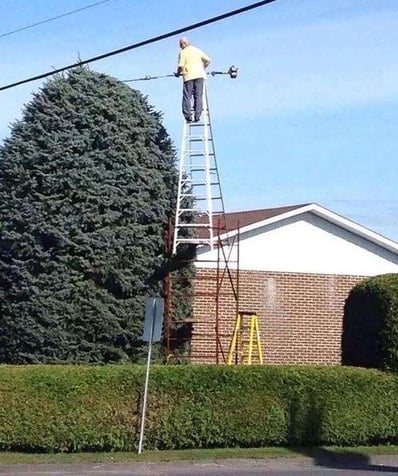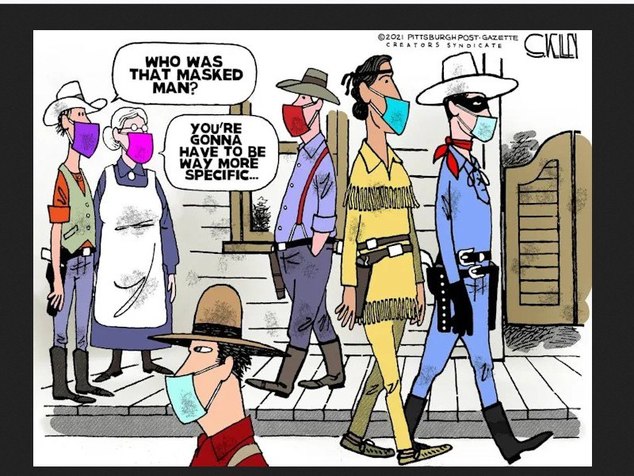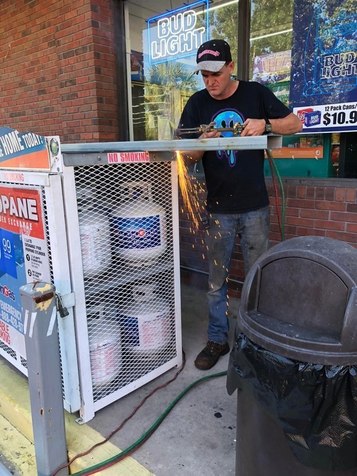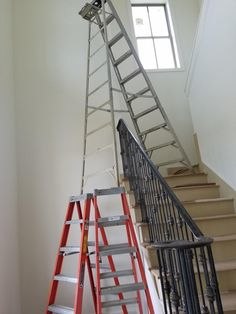Comments
-
Frivolous Friday Mk2 AKA The Dead Horse?It's almost time to throw of the shackles, and do the things you want to, rather than the have tos, if this includes gardening, don't do this

Or this

And of course, have a good one everyone, enjoy your holidays, and let's hope 2022 is better than 2021.

-
Use Trailers In Your Business?
Wouldn't disagree that training is vital with correctly loading a trailer Darren, but if for whatever reason, a trailer under tow detaches, all the training in the world isn't going to recover the situation, a Breakaway Unit just might and as an employer, fitting one is a reasonably practicable step to prevent what could be a fatal outcome.
Good links Keith :up: You too Sheri -
Use Trailers In Your Business?Here's Darren's link to the on line course Light Vehicle Load Security That would be a good starting point, Has she brought a horse float as well, or is she planning to hire/borrow one?
-
Hypothetically what is the expectations for a workplace if there is a positive Covid-19 case?Good clear resources Chris :up: Looking through them, COVID-19 Contact Classification ProcessDo you know what to do if a Worker on-site becomes a COVID-19 contact? probably has has some pointers for Lucille
-
Mask wearing for COVID at expense of other risksInfluence of facial hair length, coarseness, and areal density on seal leakage of a tight-fitting half-face respirator
ABSTRACT
Background: OSHA regulations state that an employer shall not permit tight-fitting respirators to be worn by employees who have facial hair that comes between the skin and facepiece seal. Studies have shown that facial hair in the face seal zone can increase penetration and decrease the fit factor (FF), although the relationship between the amount and characteristics of facial hair and the increase in penetration is not well quantified. This article examines the influence of facial hair length, areal density, and coarseness on FF for one model of half-face elastomeric negative-pressure air purifying respirator.
Approach: Quantitative fit tests (QNFT) were performed on 19 subjects with beards initially 0.500-in long and subsequently trimmed to 0.250, 0.125, and 0.063 in, then after a razor shave. Three fit tests were performed at each of the 5 lengths, for 285 total tests. The average diameter and areal density of cheek and chin hair were measured. Penetration was modeled as a function of hair length category, beard areal density, and hair coarseness.
Results: FF decreased with beard length, especially beyond 0.125 in. However, passing FF scores were achieved on all tests by all subjects at the smooth shave and 0.063 in conditions, and 98% of tests were passed at 0.125 in; seven subjects passed all tests at all conditions. Chin and cheek areal densities were significantly different and were only weakly correlated. Beard hair diameters were normally distributed across subjects (mean 76 µm, standard deviation 7.4 µm). Beard length and areal density, but not coarseness, were statistically significant predictors of fit using an arcsine transformed penetration model. FF decreased with increasing beard length, especially beyond 0.125 in, although FF with a “stubble” beard did not differ significantly from a smooth shave. FF also decreased with increasing areal beard hair density.
Conclusion: Beard length and areal density negatively influence FF.However, tight-fitting half-face negative-pressure respirator fit tests can achieve adequate fit factor scores even with substantial facial hair in the face seal area.
https://www.tandfonline.com/doi/full/10.1080/15459624.2017.1416388 -
Mask wearing for COVID at expense of other risksHere's a link to a study on Mask Seal Design but use of a "sealant" Silicon Grease or Vaseline wasn't part of the mix. In this study, an undercover was used to try and improve the seal achieved by a bearded mask wearer.
Another study looked at using a "silicon dressing strip" to try and reduce damage to the mask wearers skin caused by prolonged mask wearing

-
Contractor Management - The Thin Paper WallThe cheapest one is around $2,000 per year. Not free is it? Apparently due to the size and type of our company (around 100 staff and medium risk industry), we don't qualify for the free one.
One of our new client has asked for this to be done soon before we start working for them.
It will take ages to get all their questions answered and not looking forward to it :sad: — Yonny Yeung
The Devil is always in the detail :wink: At least it is (presently) cheaper than some of the overseas based options that burst on the scene in 2017- 2018 -
Reluctance to Shave - Risk to HealthWill be interesting to read the actual judgement in this case rather than a reporters regurgitation of a Worksafe opinion.
-
Frivolous Friday Mk2 AKA The Dead Horse?Good to see safety signage being obeyed

More from the ladder safety files

-
Mask wearing for COVID at expense of other risksMaybe a good subject for a research project by one of your Masters students? — MattD2
Plus One Chris, be really interesting to see what the facts are, rather than intuitive opinions. -
Mask wearing for COVID at expense of other risks
Mask SealSilicone Mask Seal
Men usually have had two options if they had problems keeping a seal on their mask due to facial hair. The first was to shave off the beard and/or moustache. The second was to just deal with water in the mask. But we have the answer for you.
This Silicone Mask Seal helps those with facial hair, such as moustaches and/or beards, achieve a great mask seal. -
Frivolous Friday Mk2 AKA The Dead Horse?Someone was asked to make some bracket and put this on the wall. — Michael Wilson
Objective achieved, it's "on The wall" and won't come down, clear failure in instructions :rofl: -
Reluctance to Shave - Risk to HealthAre they better to wear a mask with a beard, not fit tested than no mask? — Stuart Keer-Keer
Just because the Standard says you shouldn't do a fit test Stuart, doesn't mean you can't, someone puts on a few extra Kg, or has a couple of teeth out, or their beard grows a bit, all of these things could change the fit they are getting with their current mask, and make it worthwhile finding out how good/bad it is.. -
Frivolous Friday Mk2 AKA The Dead Horse?Well, trees and decorations are start to appear

Now you may need a ladder to place your decorations up out of the way, so remember to practice ladder safety

-
Reluctance to Shave - Risk to HealthThe most common ones are wood dust - such as joiners and other types of fabrication in factories — Stuart Keer-Keer
Thing is Matt, any joinery shop machining MDF isn't going to be able to suck all the dust being generated by either using centralized vacuum systems, LEVs or a mixture of both. The use of positive pressure RPEs seemed a logical way to deal with the problem -
Reluctance to Shave - Risk to HealthQualitative—a pass/fail test that relies on the wearer’s ability to taste or smell a test agent. This type of test can be used on half-face respirators. — SteveH
Probably should have added, the point of doing this test for someone with a beard is not to prove how good the seal is that they are getting, it's to give them some evidence of how bad the seal is that they are getting. Providing an opening to have a discussion on why having a daily shave might be in their best interest. -
Reluctance to Shave - Risk to HealthPut Gladwrap over the intake filters, and tell the test subject to breath normally, if they go blue, they have a pretty good seal, if they keel over they have a perfect seal, at this point remove the Gladwrap. :razz:
For the most part, air and anything it contains is going to take the line of least resistance, so keeping the prefilters and filters clean should make getting a perfect seal unnecessary
Guess if you can't shave em, you either redeploy em, or after consultation and due process, sack emWhat to do - manage the hazard so they don't need masks. But what if that is not reasonably practicable? — Stuart Keer-Keer -
Reluctance to Shave - Risk to HealthMaybe investigate if there is a problem before trying to fix it, I've had a beard for 30 plus years and not had a problem getting a seal with the half face masks that I've used.
Fit and seal testing
Regardless of what facial hair an employee does or doesn’t have, it’s essential that all RPE is fit tested before use.
The Standard AS/NZS 1715:2009 Selection, use and maintenance of respiratory protective equipment describes two types of respirator fit tests—qualitative and quantitative—that can be used to determine an adequate match between the face piece of the RPE and face of the wearer.
Worksafe Queensland describes the two types of fit testing as:
Qualitative—a pass/fail test that relies on the wearer’s ability to taste or smell a test agent. This type of test can be used on half-face respirators.
Quantitative—uses specialised equipment to measure how much air leaks into the respirator. This type of test can be used on half-face and full-face respirators.
The standard states that one of the fit tests should be done before the respirator is used and then at least once a year, or when there is a change that could affect the seal. — Prochoice Safety Gear -
Reluctance to Shave - Risk to HealthWhat sort of mask Stuart? What is the hazard being minimized by the use of PPE?

Steve H

Start FollowingSend a Message
- Free stuff
- Guidelines
- Terms of Service
- Useful Hints and Tips
- Sign In
- Created with PlushForums
- © 2025 Safeguard Forum









